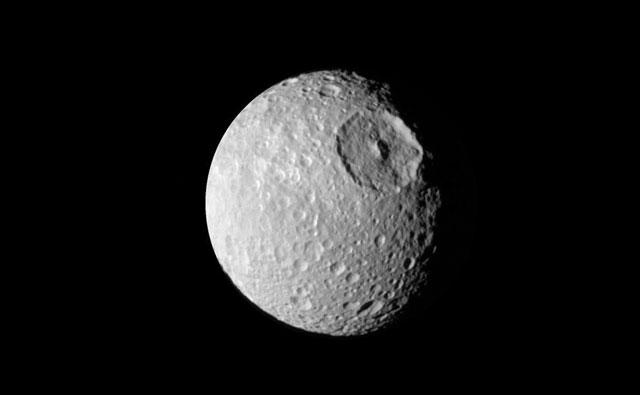
Star Wars, Star Trek, The Hitchhiker’s Guide to the Galaxy…science fiction is filled with amazing universes that are bursting with fascinating planets. And as it turns out, planetary science is beginning to catch up with and even surpass science fiction.
Since the launch of the Kepler space telescope in 2009, we have discovered thousands of worlds. Some of these are as dark as coal; others orbit so close to their parent star that they are virtually on fire; and still others are remarkably like the worlds that we see in science fiction. These exotic planets remind us that science facts often begin with the wild and unbelievable imaginings.
See 5 worlds that seem to come straight out of Star Wars.
1. Tatooine: Kepler 16b
Tatooine is the home to Luke Skywalker who, as we all know, one day grows up to find out he is the son of Darth Vader. And it turns out that this world is rather like Kepler 16b, as both planets orbit two suns. That’s right, the existence of a world with a double sunset, as portrayed in Star Wars, is a scientific fact. Kepler 16b was the first world that we ever discovered that orbited two suns. This kind of world is called a “circumbinary planet.”
Another interesting fact about Kepler 16b is that it has formed under half the distance that was normally thought planets could form within a binary system. This may make you think that Kepler 16b will be a rather warm world; however, its two suns are rather smaller than our own. As such, despite its close proximity, it still rests outside of the habitable zone (the orbit at which liquid water could theoretically exist).
So unfortunately, it seems that Kepler 16b will never be the home to any young padawan. The planet is cold, gaseous, and not thought to be capable of sustaining life as we know it (and based on its various characteristics, it probably doesn’t have life as we don’t know it either).

2. The Death Star: Mimas
The Death Star was the ultimate weapon of the Galactic Empire. It could obliterate planets and basically totally ruin your day. Mimas is one of Saturn’s moons, and it has a striking resemblance to the Death Star due to a rather larger crater that takes up a large portion of the surface.
This crater is some 130 kilometers (81 mi) across and named Herschel after the discoverer of Mimas (William Herschel, a German-born British astronomer). Amazingly, Herschel’s diameter is almost a third of Mimas’s own diameter. The crater itself reaches some 10 kilometers (6.2 mi) in-depth, and the walls surrounding it are approximately 5 kilometers (3.1 mi) high. If this feature were found on Earth, it would be about the same size as Australia.

3. Mustafar: Corot-7b:
Planet Mustafar was where Darth Maul began his Sith training, and it is also where Obi-Wan dueled with Anakin before he was to become the infamous black suit- wearing Sith known as Darth Vader. Corot-7b is rather like this world, as they are both covered in lava (which would make the lightsaber duel rather heated).
“If conditions are what we speculate, then CoRoT-7b could have multiple volcanoes going off continuously and magma flowing all over the surface,” says Rory Barnes of the University of Washington in Seattle
Another interesting fact about Corot-7b is that it is the first rocky planet discovered outside of our Solar System that orbits a star.

4. Hoth: OGLE-2006-BLG-390
Hoth is the snow-covered planet featured in the AT-AT battle in The Empire Strikes Back. Its similarity to OGLE-2006-BLG-390 (yes, the name is absurd) is purely its coldness. OGLE’s surface temperature is estimated to be -220ºC (-364°F)

5. Coruscant: Earth
Okay, so we obviously didn’t need Kepler to discover this world, and there are probably a ton of science fiction worlds that kind of resemble Earth. But still. Coruscant is the capital of the Empire, and it is entirely covered by a city. It has been likened to Earth because (obviously) our planet is the only known world to house massive cities, densely populated areas, and so on.
Moreover, some scientists predict that, if we continue on the way that we are, there really won’t be too much of nature left on our own Pale Blue Dot.
